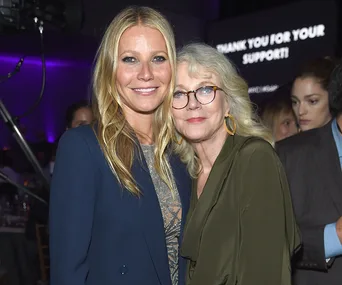When it comes to your health, you probably put things like weight, mental health and blood pressure at the top of your ‘to manage’ list, but what about your bones?
When it comes to the crunch, most of us don’t invest enough time or energy into our general bone health, leaving us unsure and potentially at risk of common health issues such as osteopenia — low bone density — and osteoporosis, where bones become brittle and prone to fractures and breaks.
Considering 1.28 million Australians are affected by osteoporosis, it’s probably time you start paying attention to your bones, starting now…
Humans are born with around 300 bones
Humans are born with around 300 bones, many of which fuse together as you age, so you end up with 206 bones (and 32 teeth).
Crazily enough, over half of your body’s bones are in your hands and feet — each foot has 26 bones and each hand, including the wrist, has 54.

As you get older, your bones fuse together taking them from around 300 bones down to 206.
(Source: Getty Images)Bone is a living tissue
Just like your muscles and skin, your bones are living tissue — they have their own blood vessels and are made up of living cells and collagen. The cells in your bones regenerate almost constantly, but the complete process can take almost 10 years. Crazy, we know!
However, the renewal process starts to slow down as the body ages, making your bones more fragile and possibly more susceptible to fractures. This is why it’s important to constantly fuel your body with a nutrient rich diet, do weight bearing exercises and get regular bone scans to monitor your bone density.
Women can lose up to 20 per cent of their bone density in the years after menopause
When it comes to bone density, or more specifically, deteriorating bone density, women are at a greater risk than men (sigh). The reason: Menopause.
Menopause causes women’s oestrogen levels to drop significantly, and when oestrogen levels decrease, bones often lose calcium and other minerals at a faster rate. This loss can cause bones to become more porous, making them more susceptible to health issues like osteopenia and osteoporosis.
A bone scan can help you detect the early signs of osteoporosis
Osteoporosis is one of the most common bone-related diseases in Australia — it affects more Australians than cervical cancer and breast cancer combined — and unfortunately, many people find out they have the disease after they’ve broken a bone!
While the disease isn’t curable, it is treatable, which is why it’s important to get regular bone scans.
The quick and easy procedure checks your bone density levels and they should be something that you are booking in alongside your pap smears and mammograms. The machine will help you determine whether you sit on the osteoporosis grid.
You can eat your way to stronger bones
It’s the oldest wives’ tale in the book: milk is good for your bones. The reason being, milk is a wonderful source of calcium — one of the two nutrients that can help your bones retain strength.
For some, drinking milk by the glass is a pleasure, but for others — particularly lactose intolerant folk — the thought makes your stomach churn. Never fear though, foods like green leafy vegetables, tofu, nuts and fish like sardines are packed full with calcium!
It’s also important that you get your daily dose of vitamin D, as this nutrient can help your body to absorb calcium. Foods like oily fish, eggs and fortified fat spreads are packed with vitamin D, however these types of food aren’t always enough. The best way to get in your daily dose is a little sun exposure.

Calcium and vitamin D rich foods — like salmon and avocado — can help to build your bone strength.
(Source: Getty Images)Bones are natural healers
Breaking a bone can be a very scary and painful experience — especially as you start to get older. Fortunately though, bones have the ability to heal themselves.
The secret lies in stem cells and the bone’s natural ability to renew itself — well, thanks bones! The body’s immediate response to a fracture means that new bone almost immediately starts to form at the edge of a break or crack to heal it.
However, as your bones begin to age and get weaker, you can become more susceptible to breaks and bones can take a longer time to heal. If you do experience a break or fracture it’s important to seek the advice of your GP immediately and book in a scan to test your bone density levels.
The ‘funny bone’ isn’t actually a bone
It got it’s nickname because of that ‘funny’ feeling you get when you hit it, but the ‘funny bone’ (located in your elbow) isn’t a bone, in fact, it’s a nerve.
Running down the inside of your elbow is a nerve called the ulnar nerve and its job is to let the brain know about the feelings in your fourth and fifth finger.
When that nerve is bumped against the humerus (that long bone between your shoulder and elbow) it causes a funny feeling that is more weird than it is painful.



